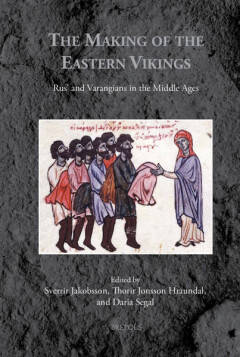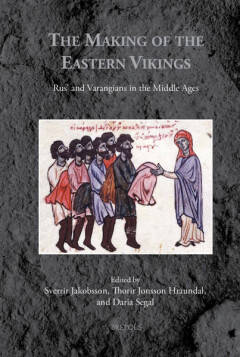
- Afhalen na 1 uur in een winkel met voorraad
- Gratis thuislevering in België vanaf € 30
- Ruim aanbod met 7 miljoen producten
- Afhalen na 1 uur in een winkel met voorraad
- Gratis thuislevering in België vanaf € 30
- Ruim aanbod met 7 miljoen producten
Zoeken
Making of the Eastern Vikings
Rus' and Varangians in the Middle Ages
Sverrir Jakobsson
Hardcover | Engels
€ 90,10
+ 180 punten
Omschrijving
Historiography on the Vikings of the East - the Rus' and the Varangians - has been both multiform and varied, but it has been invariably focused on actual historical events, and the extent to which these are accurately reflected in written sources. In contrast, very little attention has been paid up to now to the narrators behind these medieval accounts, to their motives in writing, or to the context in which they were working. This volume aims to redress the balance by offering a re-examination of medieval sources on the Eastern Vikings and by highlighting ongoing 'debates' concerning the identities of the Rus' and the Varangians in the medieval period. The chapters gathered here compare and contrast sources emanating from different cultures - Byzantium, the Abbasid Caliphate and its successor states, the early kingdoms of the Rus', and the high medieval Scandinavian kingdoms - and examine what significance these sources have attached to the Rus' and the Varangians in different contexts. The result is a new understanding of how different cultures chose to define themselves in relation to one another, and a new perspective on the history of the Scandinavian peoples in the East.
Specificaties
Betrokkenen
- Auteur(s):
- Uitgeverij:
Inhoud
- Aantal bladzijden:
- 236
- Taal:
- Engels
Eigenschappen
- Productcode (EAN):
- 9782503606712
- Verschijningsdatum:
- 8/02/2024
- Uitvoering:
- Hardcover
- Formaat:
- Genaaid
- Gewicht:
- 430 g

Alleen bij Standaard Boekhandel
+ 180 punten op je klantenkaart van Standaard Boekhandel
Beoordelingen
We publiceren alleen reviews die voldoen aan de voorwaarden voor reviews. Bekijk onze voorwaarden voor reviews.











